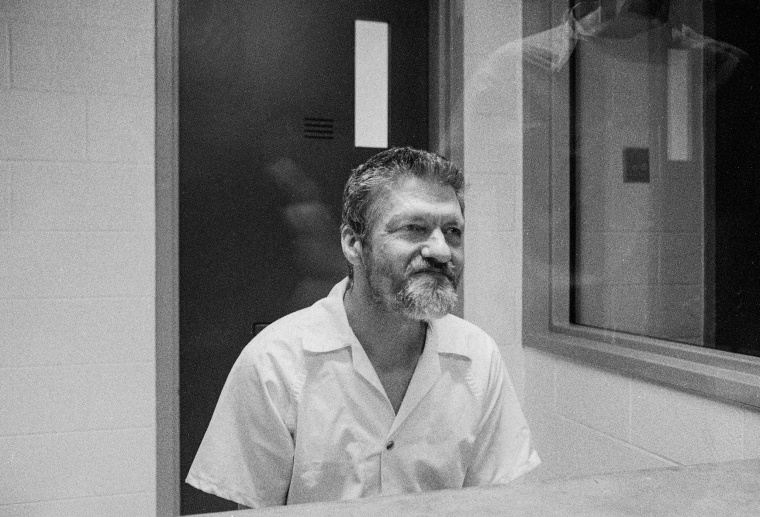Ted Kaczynski, the man known as the "Unabomber," died by suicide in his prison cell after having served more than 25 years of his life sentence, a senior law enforcement official said.
Kaczynski, 81, was found dead Saturday in his North Carolina prison cell, the Federal Bureau of Prisons confirmed. He was transferred there in 2021 from a maximum-security Colorado prison because of his declining health.
The state's chief medical examiner will conduct an autopsy, which is standard protocol, the official said. Kaczynski was diagnosed with cancer; the type and its severity are unclear.
Kaczynski pleaded guilty in 1998 to a series of bombings across the country from 1978 to 1995. His first bomb was found in a parking lot at the University of Illinois Chicago.
Some of his other collegiate targets included the University of Michigan, Yale University, Vanderbilt University and University of California, Berkeley.
Three people were killed and 23 others were injured in 16 explosions created by the Harvard-educated Kaczynski. His homemade bombs were sent by mail, including an altitude-triggered explosion that went off on an American Airlines flight.

A 1995 threat to blow up a plane out of Los Angeles before the end of the July 4 weekend threw air travel and mail delivery into chaos. The "Unabomber" later claimed it was a "prank."
The name "Unabomber" came from the FBI code name used in his case, "UNABOM," which was created based on the university and airline targets.
Kaczynski was arrested in 1996 at a cabin where he was living in western Montana. Authorities found a live bomb, components to make more bombs and 40,000 handwritten journal pages that included bomb-making experiments and descriptions of his crimes, the FBI said.
Kaczynski's anti-technology rant, “Industrial Society and Its Future,” was published jointly by The Washington Post and The New York Times in 1995. The decision was made at the urging of federal authorities after the then-unknown bomber insisted he would desist from terrorism if a national publication published his writings.
But the screed also led to his capture, as his brother, David, and David’s wife, Linda Patrik, recognized his work and turned him in to the FBI. His brother was also able to provide authorities with samples of other writings from Kaczynski that were linguistically analyzed at the FBI.
The analyst's review determined the samples to have been written by the person who wrote the diatribe, which served as the basis for a search warrant.
After his arrest, Kaczynski refused his attorneys' attempts to mount an insanity defense. He fired his lawyers and entered a guilty plea to avoid the death penalty.
Kaczynski described his motive as “simply personal revenge," according to his personal journals, which were released during trial.
“I often had fantasies of killing the kind of people I hated — i.e., government officials, police, computer scientists, the rowdy type of college students who left their beer cans in the arboretum, etc., etc., etc.,″ he wrote.
Kaczynski killed computer rental store owner Hugh Scrutton, advertising executive Thomas Mosser and timber industry lobbyist Gilbert Murray. Bombs maimed California geneticist Charles Epstein and Yale University computer expert David Gelernter two days apart in June 1993.
If you or someone you know is in crisis, call 988 to reach the Suicide and Crisis Lifeline. You can also call the network, previously known as the National Suicide Prevention Lifeline, at 800-273-8255, text HOME to 741741 or visit SpeakingOfSuicide.com/resources for additional resources.
